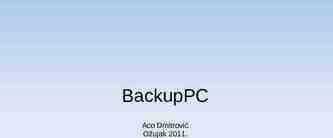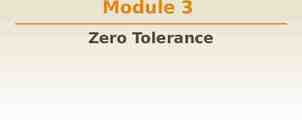Center of Mass of a Solid of Revolution
22 Slides607.00 KB
Center of Mass of a Solid of Revolution
See-Saws We all remember the fun see-saw of our youth. But what happens if . . .
Balancing Unequal Masses Moral Both the masses and their positions affect whether or not the “see saw” balances.
Balancing Unequal Masses M1 M2 d1 Need: M1 d1 M2 d2 d2
Changing our Point of View The great Greek mathematician Archimedes said, “give me a place to stand and I will move the Earth,” meaning that if he had a lever long enough he could lift the Earth by his own effort.
In other words. . . We can think of leaving the masses in place and moving the fulcrum. It would have to be a pretty long see-saw in order to balance the school bus and the race car, though!
In other words. . . M1 M2 d1 d2 (We still) need: M1 d1 M2 d2
What happens if there are many things trying to balance on the see-saw? Where do we place the fulcrum? Mathematical Setting First we fix an origin and a coordinate system. . . -2 -1 0 1 2
Mathematical Setting And place the objects in the coordinate system. . . M1 d1 M4 M3 M2 d2 0 d3 d4 Except that now d1, d2, d3, d4, . . . denote the placement of the objects in the coordinate system, rather than relative to the fulcrum. (Because we don’t, as yet, know where the fulcrum will be!)
Mathematical Setting And place the objects in the coordinate system. . . M1 d1 M4 M3 M2 d2 x 0 d3 Place the fulcrum at some coordinate x . x is called the center of mass of the system. d4
Mathematical Setting And place the objects in the coordinate system. . . M1 d1 M4 M3 M2 d2 x 0 d3 d4 In order to balance 2 objects, we needed: M1 d1 M2 d2 OR M1 d1 - M2 d2 0 For a system with n objects we need: M 1 (d1 x ) M 2 (d 2 x ) M 3 (d 3 x ) M n (d n x ) 0
Finding the Center of Mass of the System Now we solve for x . M 1 (d1 x ) M 2 (d 2 x ) M 3 (d3 x ) M n (d n x ) 0 leads to the following set of calculations M1d1 M 1 x M 2 d 2 M 2 x M 3d3 M 3 x M n d n M n x 0 M 1d1 M 2 d 2 M 3d 3 M n d n M 1x M 2 x M 3 x M n x M 1d1 M 2 d 2 M 3d3 M n d n M 1 M 2 M 3 M n x And finally . . . M d M 2 d 2 M 3 d3 M n d n x 1 1 M1 M 2 M 3 M n
The Center of Mass of the System In the expression The numerator is called the first moment of the system M 1d1 M 2 d 2 M 3d 3 M n d n x M1 M 2 M 3 M n The denominator is the total mass of the system
The Center of Mass of a Solid of Revolution. Some preliminary remarks: – I will ask you to believe the following (I think) plausible fact: Due to the circular symmetry of a solid of revolution, the center of mass will have to lie on the central axis. – In order to approximate the location of this center of mass, we “slice” the solid into thin slices, just as we did in approximating volume.
The Center of Mass of a Solid of Revolution We can treat this as a discrete, onedimensional center of mass problem!
Approximating the Center of Mass of a Solid of Revolution M 1d1 M 2 d 2 M 3d3 M n d n x M1 M 2 M 3 M n What is the mass of each “bead”? Assume that the solid is made of a single material so its density is a uniform throughout. Then the mass of a bead will simply be times its volume.
Approximating the Center of Mass of a Solid of Revolution
Approximating the Center of Mass of a Solid of Revolution R h d volume R 2 h d mass d volume R 2 h xi 1 , f xi 1 f xi 1 xi So . . . 2 d volumei f ( xi 1 ) xi 2 xi d massi d volume f ( xi 1 ) xi
Approximating the Center of Mass of a Solid of Revolution Summarizing: The mass of the i bead is th The position of the ith bead is x di xi 1. M 1d1 M 2 d 2 M 3 d3 M n d n M1 M 2 M 3 M n 2 2 d massi d volume f ( xi 1 ) xi . 2 2 2 2 2 f ( x0 ) f ( x1 ) f ( x2 ) f ( xn 1 ) n xi 1 f ( xi 1 ) 2 f ( x0 ) x0 f ( x1 ) x1 f ( x2 ) x2 f ( xn 1 ) xn 1 i 1 n f ( xi 1 ) i 1 2 2 2
The Center of Mass of a Solid of Revolution x M 1d1 M 2 d 2 M 3d 3 M n d n M1 M 2 M 3 M n 2 2 2 2 f ( x0 ) x0 f ( x1 ) x1 f ( x2 ) x2 f ( xn 1 ) xn 1 2 2 2 f ( x0 ) f ( x1 ) f ( x2 ) f ( xn 1 ) n xi 1 f ( xi 1 ) i 1 n f ( xi 1 ) Both the numerator and denominator are Riemann sums. As we subdivide the solid more and more finely, they approach integrals. 2 2 i 1 . . . And the fraction approaches the center of mass of the solid! 2
The Center of Mass of a Solid of Revolution In the limit as the number of “slices” goes to infinity, we get the coordinate of the center of mass of the solid . . b x 2 x f ( x) dx a b 2 f ( x) dx a where a and b are the endpoints of the region over which the solid is “sliced.”
If the cross sections are “washers”. . . The derivation is more or less the same, except that when we compute the area of the little cylinder, we get d volumei f ( xi 1 ) 2 g ( xi 1 ) 2 x i as we did when we computed the volume of a solid of revolution. So the coordinate of the center of mass will be: b 2 2 x f ( x) g ( x) dx x f ( x) g ( x) dx a b 2 2 a where a and b are the endpoints of the region over which the solid is “sliced.”



























